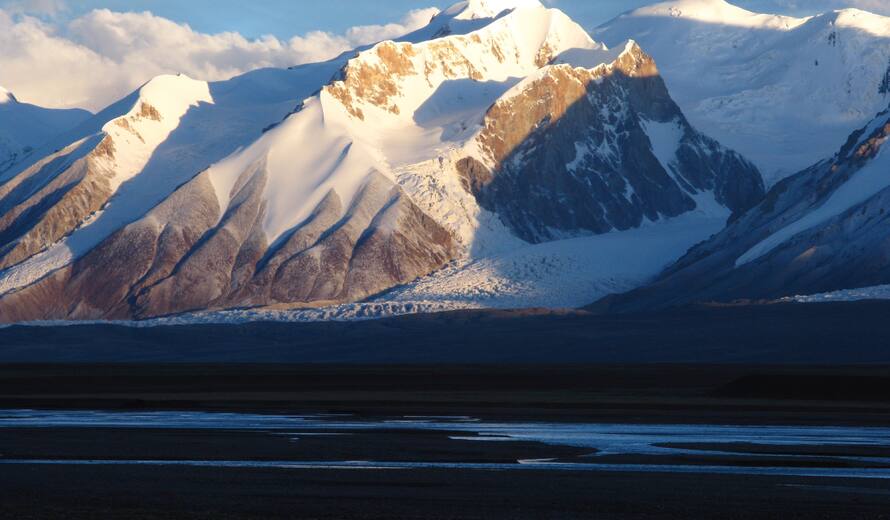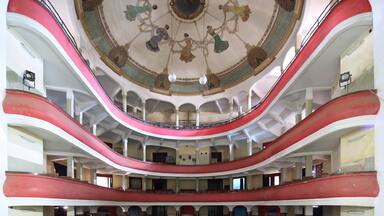World Heritage Committee inscribes three natural sites and one extension on UNESCO’s World Heritage List
Krakow, Poland, 7 July—The World Heritage Committee, in this afternoon’s session, inscribed natural sites in Argentina and China on UNESCO’s World Heritage List as well as a transboundary site in Mongolia and the Russian Federation. It also approved the extension of the World Heritage site of the Primeval Beech Forests of the Carpathians and the Ancient Beech Forests of Germany, which now stretches over 12 countries: Albania, Austria, Belgium, Bulgaria, Croatia, Germany, Italy, Romania, Slovakia, Slovenia, Spain, Ukraine.
The sites added, in order of inscription are:
Qinghai Hoh Xil (China)
Qinghai Hoh Xil, located in the north-eastern extremity of the Qinghai-Tibetan Plateau, is the largest and highest plateau in the world. This extensive area of alpine mountains and steppe systems is situated more than 4,500 m above sea level, where sub-zero average temperatures prevail all year-round. The site’s geographical and climatic conditions have nurtured a unique biodiversity. More than one third of the plant species, and all the herbivorous mammals are endemic to the plateau. The property secures the complete migratory route of the Tibetan antelope, one of the endangered large mammals that are endemic to the plateau.
Landscapes Of Dauria (Mongolia / Russian Federation)
Shared between Mongolia and the Russian Federation, this site is an outstanding example of the Daurian Steppe eco-region, which extends from eastern Mongolia into Russian Siberia and north-eastern China. Cyclical climate changes, with distinct dry and wet periods lead to a wide diversity of species and ecosystems of global significance. The different types of steppe represented, such as grassland and forest, as well as lakes and wetlands serve as habitats for rare species of fauna, such as the White-Naped crane and the Great bustard, as well as millions of vulnerable, endangered or threatened migratory birds. It is also a critical site on the migration path for the Mongolian gazelle.
Los Alerces National Park (Argentina)
The Los Alerces National park is located in the Andes of northern Patagonia and has a western boundary, which coincides with the Chilean border. Successive glaciations have moulded the landscape in the region creating spectacular features such as moraines, glacial cirques and clear-water lakes. The vegetation is dominated by dense temperate forests, which give way to alpine meadows higher up under the rocky Andean peaks. The property is vital for the protection of some of the last portions of continuous Patagonian Forest in an almost pristine state and is the habitat for a number of endemic and threatened species of flora and fauna.
Primeval Beech Forests of the Carpathians and Other Regions of Europe (Albania, Austria, Belgium, Bulgaria, Croatia, Germany, Italy, Romania, Slovakia, Slovenia, Spain, Ukraine)
This transboundary extension of the World Heritage site of the Primeval Beech Forests of the Carpathians and the Ancient Beech Forests of Germany (Germany, Slovakia, Ukraine) stretches over 12 countries. Since the end of the last Ice Age, European beech spread from a few isolated refuges in the Alps, Carpathians, Mediterranean and Pyrenees over a short period of a few thousand years in a process that is still ongoing. This successful expansion is related to the tree’s flexibility and tolerance of different climatic, geographical and physical conditions.
The 41st session of the World Heritage Committee (9-12 July), chaired by Jacek Purchla, founder and director of the International Cultural Centre in Kraków, will continue inscribing sites on the World Heritage List through 9 July
Media
Lucía Iglesias Kuntz,
UNESCO,
l.iglesias@unesco.org,
+33 (0) 6 80 24 07 29 or +48 574 645 560.
Agnès Bardon,
UNESCO,
a.bardon@unesco.org,
+33 (0) 6 80 24 13 56 or +48 574 645 559





